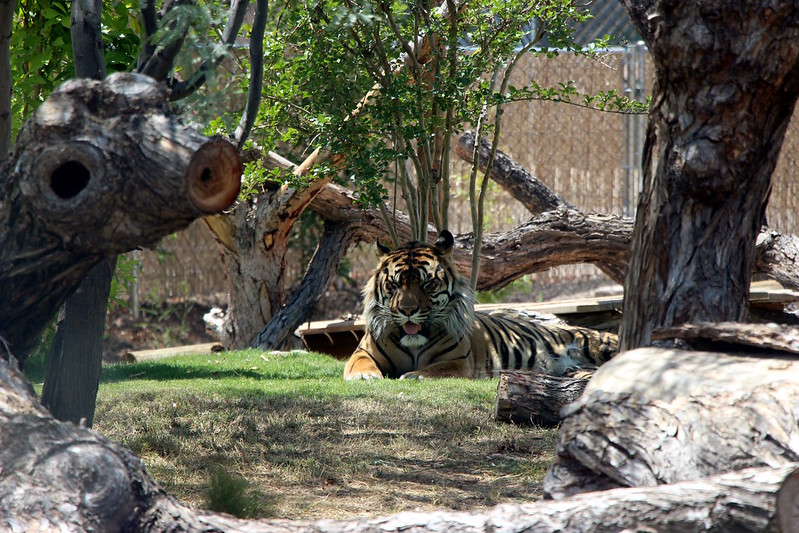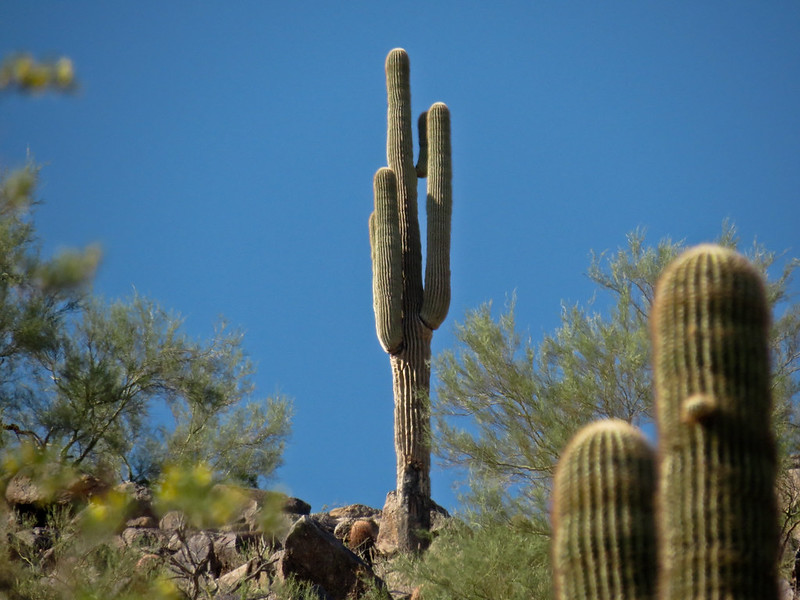Last updated on December 29th, 2020
Phoenix is located in the south-central portion of Arizona and about 120 miles north of the Mexico border. Phoenix is situated midway between El Paso, Texas and Los Angeles, California. Phoenix is the capital and the largest city in the state of Arizona.
Facts about Phoenix, Arizona
1. Phoenix is known as Arizona’s Urban Heart.
2. Phoenix is the only state capital with a population of more than 1 million residents. The population of Phoenix is predominantly white.
Phoenix on the map
3. Initially the Hohokam people occupied the Phoenix Area for 2,000 years and during the time they made their best effort to make the land arable by making 135 miles of irrigation canals. However, according to the available record, the period of drought between 1300 and 1450, led to the Hohokam civilization’s abandonment of the region.
4. The region was settled as an agricultural community in 1867 near the confluence of the Salt and Gila Rivers and was incorporated as a city in 1881, finally becoming the capital of Arizona territory in 1889.
5. Darrell Duppa is considered to have named the town “Phoenix” based on his assumption after seeing the ruins and prehistoric canals of Hohokam. He believed that a new civilization would rise from the ashes of a former civilization. He is also credited with building one of the oldest homes in Phoenix in 1870.
6. In 1940, the town had an estimated population of 65,000 residents and by 2010 it became the nation’s sixth largest city.
7. After New York City, Los Angeles, Chicago, and Houston, the city is the fifth largest city nationwide.
8. After the World War II, one factor than contributed to the fast growth of the city was the availability of the large untapped labor pool. Industrialists saw this as a great opportunity and started moving into the region to open their manufacturing facilities. The availability of affordable home air conditioning. was another factor that supported the growth of population in the region after the World War II.
9. Sandra Day O’Connor, a resident of Phoenix, on September 25, 1981, became the first female justice on the U.S. Supreme Court.
10. Did you know that Phoenix receives the most sunshine of any major city on Earth?
11. Ranching and farming were once an essential part of the city’s economy which is now dominated by tourism and supported by service and technology sectors. Interestingly, about three-quarters of the manufacturing jobs in Arizona are located in the Phoenix area. Companies such as Intel, Motorola and McDonnell Douglas are among some companies that operate from the area.

12. Phoenix Zoo, which opened in 1962, is the largest privately owned non-profit zoo in the United States.
13. With Baseball being particularly popular, sports play a crucial part in the culture of Phoenix.
14. Did you know that the land on which the state capitol building in Arizona stands was donated by a local farmer? However, the state capitol building does no longer actually house any branches of the state’s government. The branches are now relocated to the nearby buildings and the old capitol building is now the Arizona Capitol Museum.
15. The Musical Instrument Museum in Phoenix houses approximately 16,000 instruments from almost 200 different countries.
16. The Phoenix Art Museum is the largest art museum in the Southwestern United States. With a landscaped Sculpture Garden, the museum also showcases a huge collection of national and international modern and contemporary art.
17. There is a mysterious bat cave in Phoenix, where thousands of Mexican free tailed bats gather to rest and sleep during the day and flock back to their destination during the night. This usually happens when a batch of approximately 10,000 to 20,000 bats are on their way to Mexico between May and October every year. Interestingly, the cave where these bats rest is a flood control tunnel which is used to keep the city from over flooding when the need be.
18. Phoenix Sky Harbor International Airport is one of the top 10 busiest airports in the country. Serving more than 45 million passengers annually, it is the main airport for the Greater Phoenix Area (refers to the cities of Chandler, Glendale, Scottsdale, and Tempe.) American Airlines and Southwest Airlines have their hub in the airport.
19. In July 1935, the city of Phoenix purchased Sky Harbor for $100,000. On a normal day at the airport, more than 1,200 aircraft arrive and depart from its three runways handling more than 1,000 tons of cargo and 125,000 passengers. Sky Harbor is spread over 3,400 acres.
20. Did you know that Arizona is the only state in the U.S. to have a section of all the four deserts (Great Basin, Mohave, Chihuahuan and Sonoran) that are there in North America?

21. The saguaro is the largest cactus in the United States. They are found exclusively in the Sonoran Desert. If the right growing conditions permit, the cactus can live as live as 150-200 years old. It is interesting to note here that it is a very slow growing cactus and after the age of 10 years, the might only be 1.5 inches tall. Arizona has strict regulations about the harvesting, collection or destruction of this species. Phoenix is the largest city in Sonoran Desert. Tucson is also a part of the Sonoran Desert.

22. If you are fond of mysteries, then try to solve this one. It is about the Camelback Mountain in the Phoenix Valley. The mountain is named so because it has two humps and a structure that represents the head of a camel. On some spots, here, you can find granite that dates back to some 1.5 billion years while the rest of the mountain including the hump is made up of red sandstone which is merely 25-30 million years of age. Geologists are trying hard to figure out how this happened.
23. The warm and dry weather in the regions leads to the development of dust/wind/sand storms called haboobs. Between June and September, Phoenix experiences three of these large, dangerous storms a year.
24. “Five C’s”: Copper, Cattle, Cotton, Climate, and Citrus were the pillars of the state’s original economy.
25. Phoenix has a dry, warm climate. Phoenix depends almost wholly on groundwater that it gets from the Gila and Salt rivers. Some supplemental water is also brought in by aqueducts via Central Arizona Project. The CAP is a 336 miles system that brings Colorado River water to central and southern Arizona. The project serves 80% of the state’s population.
26. More than 22 million visitors come to metropolitan Phoenix each year.
27. Did you know that Phoenix is the largest U.S. city without Amtrak rail service? It was on October 9, 1995, that an Amtrak passenger train was derailed, leaving an Amtrak employee dead and several others injured. Amtrak stopped its service to Phoenix in June 1996. The FBI offered a $310,000 reward in 2015 for information leading to the arrest and conviction of those responsible for the 1995 derailment of the Amtrak train.

28. Anthem Veterans Memorial comes to life briefly at 11:11 am on 11th of November each year. The monument is designed such that the light through the elliptical openings of its five pillars, that each represent an arm of the U.S. military, slants downward and illuminates the Great Seal of the United States. The memorial has 1750 red paved stones that are engraved with the names of the veterans. The pillars are arranged in Department of Defense order of precedence: Army, Marine Corps, Navy, Air Force, and Coast Guard. The red stones, white pillars and blue sky represent the colors on the American flag. And interestingly, the monument itself is copyrighted, thus it cannot be produced anywhere else.
29. Did you know that Phoenix, Arizona has more land designated for parks and preserves than any other major city in the country?
30. For golf enthusiasts, there is a good news. There are more than 200 golf courses in the greater Phoenix area.
. . . continue reading on the next page
